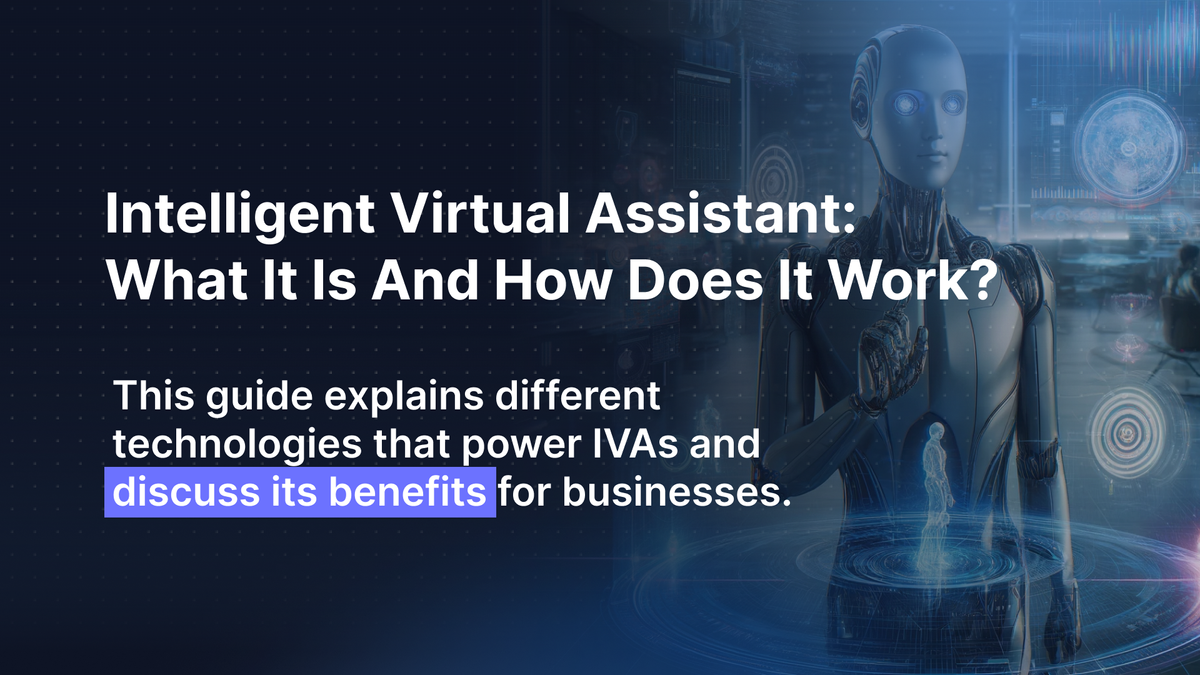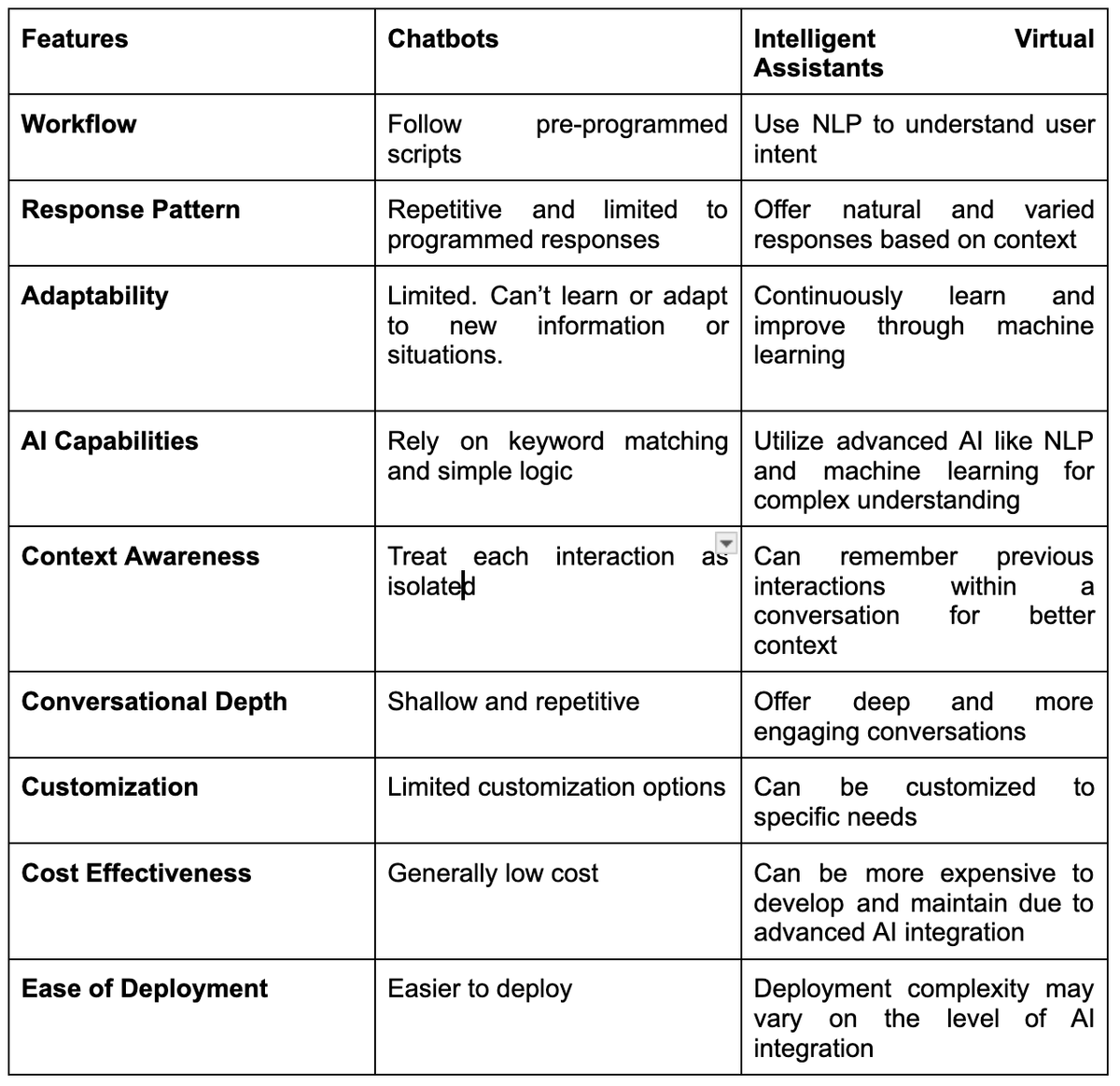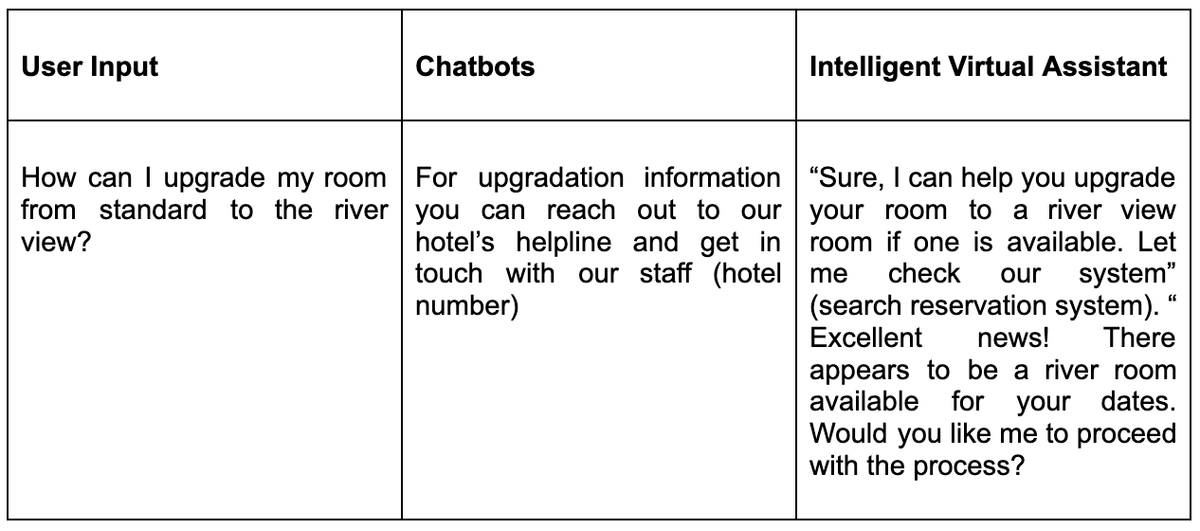Explore what are Intelligent virtual assistants and how they work. This guide...

The rise of AI is challenging businesses to continuously evolve and provide exceptional customer service. Intelligent virtual assistants (IVAs) are AI applications that can provide 24/7 customer support, advanced automation and an enhanced customer experience. The global intelligent virtual assistant market was valued at USD 3.08 billion in 2023 and is projected to reach 14.13 billion by 2030. This highlights the growing need for automation and increased customer expectations.
Let's explore the workings of IVAs, how they use cutting-edge technology to deliver excellent customer service and what benefits they bring to business.
Intelligent virtual agents (IVA), also known as intelligent virtual assistants, are AI-enabled software applications designed to assist users in an engaging and conversational manner. IVAs leverage technologies like natural language processing (NLP) and machine learning (ML) to understand the intent behind users' requests. They can understand spoken language, respond with relevant information, and adapt their communication style based on the situation.
Think of a voice-activated remote control that can understand your requests or a chat window that can answer your queries in a natural and humane way. This is the basic idea behind IVAs.
IVAs are digital assistants that can help you with a variety of tasks, such as:
An intelligent virtual assistant is an advanced and sophisticated conversational application that combines different technologies such as NLP, machine learning and AI to comprehend
user’s input and generate appropriate responses.
NLP plays a critical role in the functioning of an intelligent virtual assistant. It analyzes what a user says or types by dissecting it into different parts:
Understanding sentence structure: NLP recognizes individual words and definitions. It analyzes how words are arranged in sentences to grasp the grammar and overall meaning.
Extracting Intent: NLP goes beyond words and uses sentiment analysis to understand the intention behind a request. For example, if you say, “I am hungry,” NLP might understand that you are looking for restaurant recommendations, not information about nutrition.
Machine learning algorithms enable IVAs to continuously learn from user interactions. Every time you interact with an intelligent virtual assistant, it collects data. ML algorithms analyze this data to identify patterns and improve the IVA’s ability to understand similar requests in the future.
AI works as the core intelligence that powers the capabilities of an intelligent virtual assistant. It uses the information extracted by NLP and the knowledge gained through ML to make connections and generate responses. AI allows IVAs to adapt their communication style based on the context of information. For instance, the IVA might use a more formal tone for a work-related inquiry and a casual tone for a personal request.
By working together, NLP, machine learning and AI enable IVAs to understand your requests in a natural way, continuously learn and improve and provide helpful responses.
The functional similarities might lead to the question: isn't it exactly how chatbots work? The terms “ Intelligent virtual assistant” and “ chatbots” are often used interchangeably, especially for simpler IVAs.
However, regarding intelligence and adaptability, IVAs outperform chatbots because they can handle more complex problems and generate more nuanced responses. Let's do a quick comparison between these two:

Now that we have distinguished Intelligent virtual assistants from chatbots let see how both of them works:

The above scenario highlights that a chatbot, while helpful for simple tasks, may require user intervention for more intricate requests. IVAs, on the other hand, can handle complex inquiries in a user-friendly and natural way. The choice between chatbots and IVAs depends upon your priorities and the specific needs of your business.
There is not a single classification system for IVAs. However, we can categorize them based on different perspectives.
These are the assistants you might find on smartphones or speakers, helping users with daily tasks like scheduling appointments, playing music or controlling smart home devices (e.g., Alexa, Siri, Google Assistant). These IVAs focus on voice interaction. They understand spoken commands and respond through voice synthesis.
Designed for businesses, these IVAs assist with customer service, technical support or internal workflows (e.g., virtual receptionist, AI customer service chatbots). These IVAs primarily interact through text input and output.
These IVAs are trained for specific industries or tasks like E-commerce chatbots that guide users through online shopping, answer product-related questions and even track order status. They can usually handle both text and voice-based communication, offering flexibility to users.
Here is a step-by-step guide on designing your intelligent virtual assistant from concept to implementation.
Before designing and implementing an IVA, the first step is to define your goals and objectives. Are you planning to streamline the internal workflow for your staff? Do you want to use it as a helping hand for customer support, handling customer queries and resolving complaints? Identifying your purpose immediately ensures that your IVA’s development aligns with your needs.
Establish clear communication channels to connect your IVA with your target audience. Think about where your users are most likely to interact:
Now that you know your IVA’s purpose and target audience, it's time to choose a platform to bring it to life. Look for an AI powered ecosystem that offers the tools you need for building and training your AI assistant. The platform should enable seamless integration across all your communication channels and constantly improve and adapt over time.
To empower your IVA with informed and relevant responses, integrate it with your data sources. This creates a seamless connection between your IVA and the knowledge it needs to function. Here is how:
This involves designing the conversational flow and how interactions will take place. Determine the tone of voice and response style. Will it be formal, friendly or somewhere in between? Ensure this personality aligns with your overall brand identity.
It's crucial to check and monitor your IVA’s performance to ensure it meets your user's expectations. This data will reveal valuable insights into how users interact with your IVA, identifying areas for improvement and opportunities for further optimization.
Let's explore some of the many advantages of a virtual assistant for your business.
An IVA never clocks out and provides round-the-clock customer support even outside of business hours. Customers can get immediate assistance with simple and frequently asked queries, leading to fast response time and increased satisfaction.

IVAs excel at automation, streamlining workflow in numerous ways. For example, they can handle repetitive tasks like appointment scheduling, data entry, or product recommendations. This frees up valuable time and effort for your human agents to concentrate on issues that need immediate attention.

IVAs play a key role in maintaining consistent customer support. They deliver information and resolve issues using your brand’s defined voice, ensuring a unified customer experience. Additionally, when complex queries arise, they can quickly escalate requests to live agents, ensuring customers receive appropriate levels of support at every touch point.
IVAs can handle large volumes of queries, scaling to meet the growing needs of your business. No need to continuously expand your customer service team – your IVA can efficiently manage a significant increase in inquiries. Furthermore, automating tasks with an IVA leads to reduced operational costs, enabling you to allocate sources for further investment and growth.

Intelligent virtual assistants (IVA) are revolutionizing how businesses interact with customers. These advanced AI chatbots help your business by enhancing customers' experience and streamlining operations. With 24/7 availability, automation capabilities and the ability to scale with your business, IVAs can improve customer experience and reduce operational costs.
Now that you understand the capabilities of IVAs consider Aidbase as your partner in creating your own customized IVA. Aidbase’s powerful AI support ecosystem and no-code solutions empower you to build an IVA tailored to your needs.
Switch to Aidbase today and create a customer experience like never before!